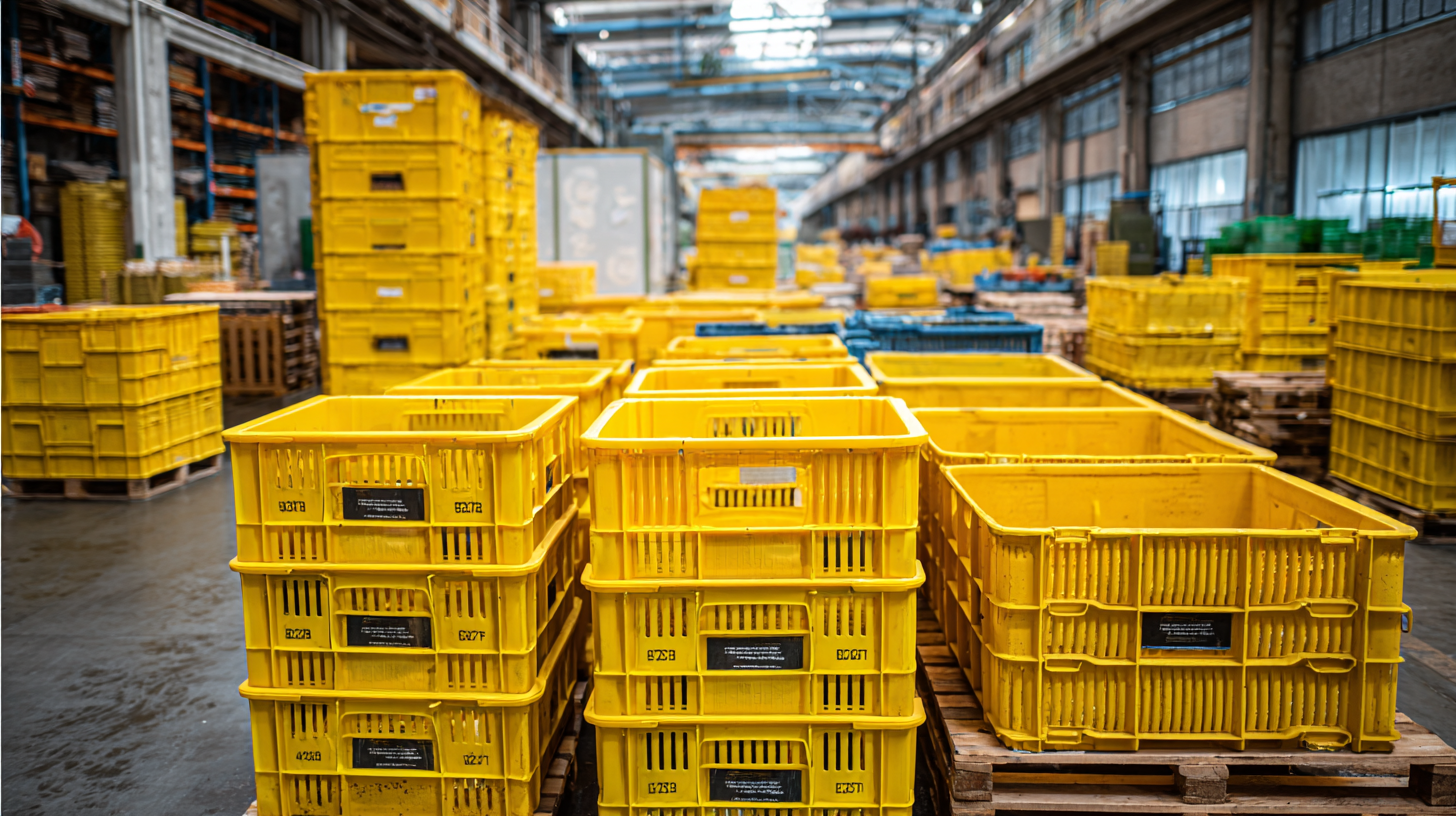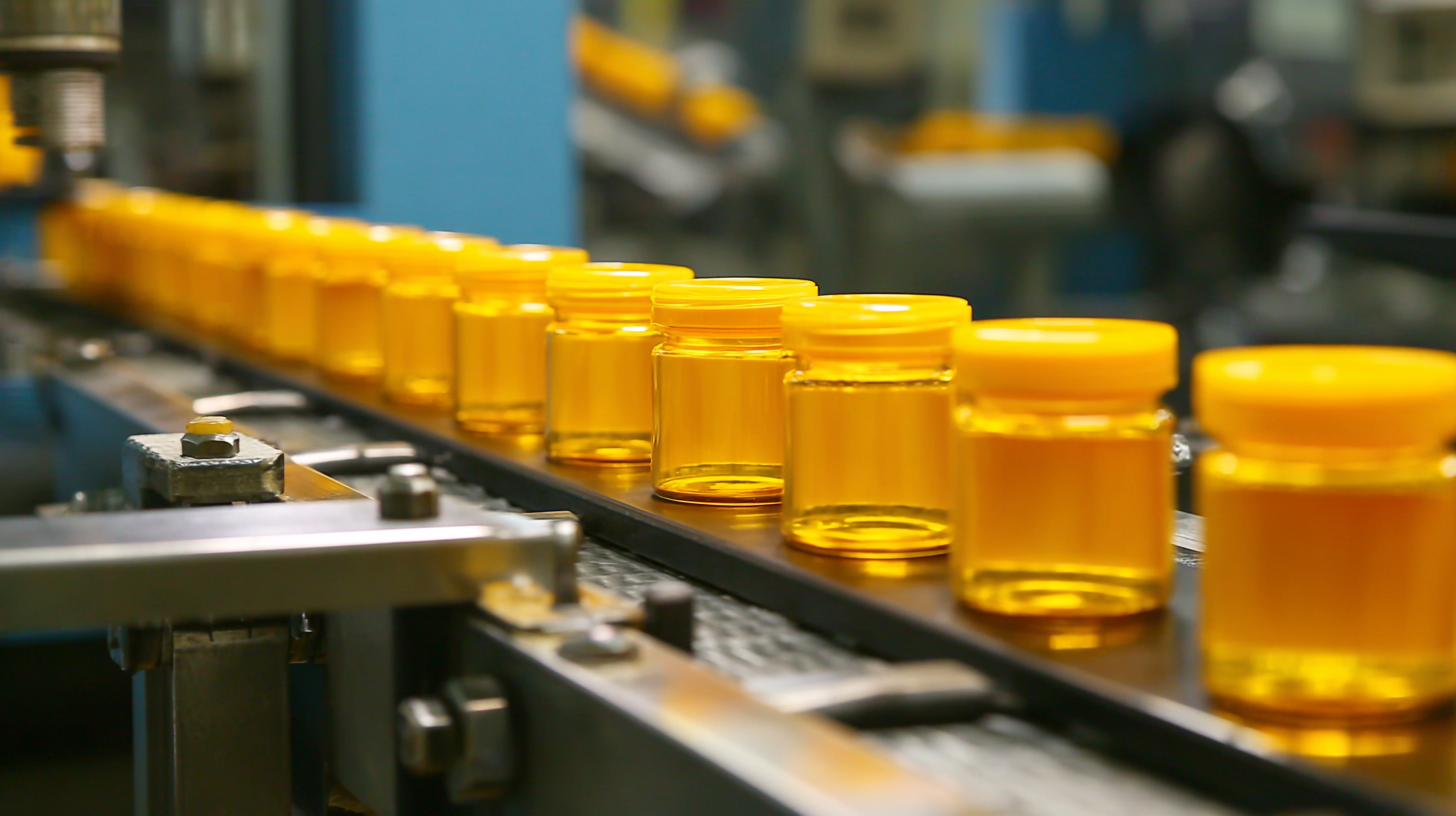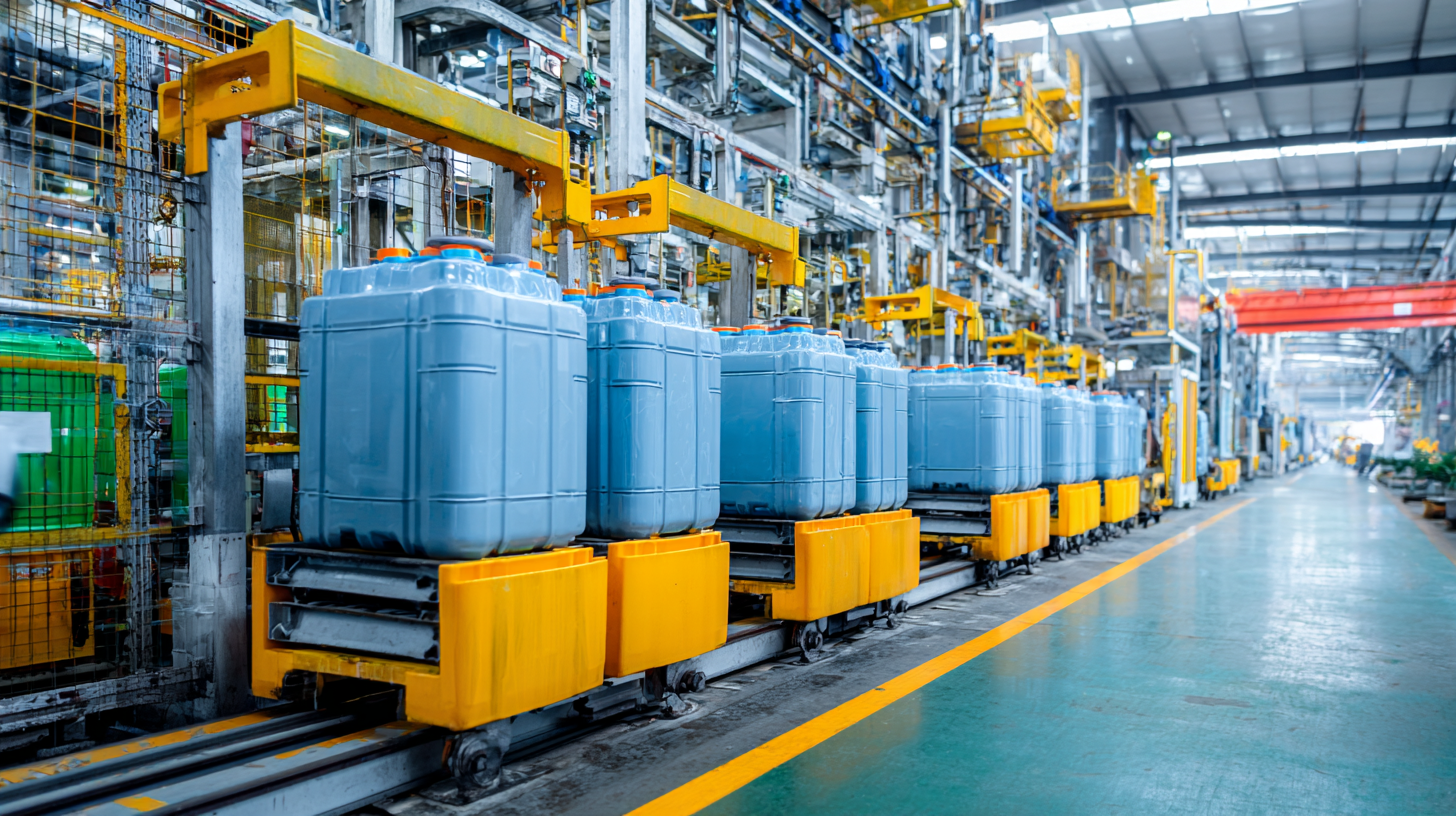Top Strategies for Maximizing Efficiency in Plastic Container Production
In the rapidly evolving landscape of manufacturing, the production of plastic containers plays a critical role, with the global market expected to reach USD 400 billion by 2027, growing at a CAGR of 3.3% (Mordor Intelligence). As industries increasingly prioritize efficiency to meet rising demand and sustainability goals, optimizing production processes has never been more crucial. From food and beverage to pharmaceuticals, plastic containers are integral to a myriad of applications, necessitating innovative strategies to enhance output while minimizing waste and energy consumption. This guide aims to explore the top strategies for maximizing efficiency in plastic container production, ensuring that companies can stay competitive in an increasingly eco-conscious market while effectively responding to consumer needs.

Understanding the Importance of Efficiency in Plastic Container Production
In the highly competitive world of plastic container production, understanding the importance of efficiency is paramount. Efficient production processes not only reduce costs but also improve product quality and accelerate time-to-market. As manufacturers prioritize sustainability and customer demand, incorporating efficiency into operations becomes essential.
One effective strategy to maximize efficiency is implementing lean manufacturing principles. This approach focuses on eliminating waste and optimizing workflows, ensuring that every step in the production process adds value. By engaging employees in continuous improvement initiatives, companies can foster a culture where efficiency is a shared goal.
Another tip is to invest in advanced technology and automation. Upgrading machinery and utilizing sophisticated software can streamline production lines, significantly enhancing output and minimizing human error. By embracing these technological advancements, companies can not only improve their efficiency but also stay ahead of industry trends and customer expectations.

Innovative Technologies Revolutionizing Production Processes
In the fast-evolving world of plastic container production, innovative technologies are playing a pivotal role in reshaping traditional manufacturing processes. One key advancement is the integration of automation and robotics. Automated systems not only increase production speed but also enhance precision in molding, reducing waste and ensuring uniformity in product quality. By employing robotic arms for tasks such as assembly and quality control, manufacturers can significantly cut down labor costs and minimize human error.
Moreover, the adoption of advanced materials and sustainable practices is revolutionizing the industry. Biodegradable plastics and recycled materials are becoming increasingly viable options, enabling manufacturers to meet rising consumer demands for environmentally responsible products. This shift not only aligns with global sustainability goals but also opens new market opportunities. Additionally, smart manufacturing technologies, like the Internet of Things (IoT), allow for real-time monitoring and data analysis, empowering companies to optimize their operations and respond swiftly to market changes. As these innovative technologies continue to develop, they promise to drive further efficiency and sustainability in plastic container production.
Top Strategies for Maximizing Efficiency in Plastic Container Production
Streamlining Workflow: Key Practices for Enhanced Productivity
In the competitive landscape of plastic container production, streamlining workflow is essential for enhancing productivity. A well-structured operation not only reduces waste but also optimizes resource utilization. One effective approach is to implement lean manufacturing principles, which focus on minimizing inefficiencies and maximizing value. By analyzing each step of the production process, companies can identify bottlenecks and streamline operations accordingly.
Tip: Regularly review your production schedule and adjust it based on demand forecasts. This proactive approach can help ensure that resources are allocated more efficiently, preventing overproduction and reducing holding costs.
Another key practice is investing in employee training and development. A skilled workforce can adapt quickly to changes in production technology and processes, leading to smoother operations. Additionally, fostering a culture of continuous improvement encourages employees to share ideas on optimizing workflows.
Tip: Organize periodic workshops where team members can brainstorm efficiency-enhancing strategies. This not only empowers employees but also helps generate innovative solutions tailored to specific operational challenges.
Top Strategies for Maximizing Efficiency in Plastic Container Production - Streamlining Workflow: Key Practices for Enhanced Productivity
| Strategy | Description | Expected Efficiency Gain (%) | Implementation Time (Months) |
|---|---|---|---|
| Automation of Processes | Utilizing robotic systems for packaging and assembly lines. | 20% | 12 |
| Lean Manufacturing | Eliminating waste and optimizing production processes. | 25% | 6 |
| Employee Training | Enhancing worker skills for better performance. | 15% | 3 |
| Quality Control Systems | Implementing real-time quality monitoring technologies. | 18% | 4 |
| Supply Chain Optimization | Improving logistics and supplier relations. | 22% | 8 |
Sustainability: Balancing Efficiency and Environmental Responsibility
In today's manufacturing landscape, balancing efficiency and environmental responsibility in plastic container production is crucial. As industries strive for sustainability, businesses must implement strategies that not only enhance productivity but also minimize their ecological footprint. Investing in advanced technologies that promote energy efficiency is a vital step in this direction. By utilizing equipment that reduces energy consumption, companies can cut operating costs while doing their part for the planet.
One effective strategy is to adopt a closed-loop recycling system. This method not only reuses materials but also reduces waste and lowers the demand for new raw materials. Implementing proper training for employees on sustainable practices can further enhance this efficiency. Encourage your team to brainstorm eco-friendly solutions and foster a culture of sustainability within the workplace.
Lastly, consider the sourcing of materials as a key component of your sustainability strategy. Opt for recycled or bio-based plastics where possible. This not only contributes to a circular economy but also appeals to environmentally conscious consumers. By prioritizing sustainable sourcing, companies can significantly reduce their carbon footprint while maintaining their production efficiency.
Upgrading Workforce Skills for Optimal Production Outcomes
 In the competitive landscape of plastic container production, upgrading workforce skills is paramount to achieving optimal production outcomes. Investing in training programs not only equips employees with the latest industry knowledge but also fosters a culture of continuous improvement. By providing hands-on training in advanced manufacturing technologies and techniques, companies can enhance operational efficiency and reduce waste. Workers who are well-versed in modern practices are better able to identify inefficiencies in the production line, contributing directly to increased output and cost savings.
In the competitive landscape of plastic container production, upgrading workforce skills is paramount to achieving optimal production outcomes. Investing in training programs not only equips employees with the latest industry knowledge but also fosters a culture of continuous improvement. By providing hands-on training in advanced manufacturing technologies and techniques, companies can enhance operational efficiency and reduce waste. Workers who are well-versed in modern practices are better able to identify inefficiencies in the production line, contributing directly to increased output and cost savings.
Additionally, fostering a collaborative learning environment can significantly boost team morale and productivity. Encouraging knowledge sharing among employees allows for innovative solutions to emerge, which can streamline processes and enhance product quality. Regular workshops and skill assessment programs can ensure that the workforce remains adaptable to evolving industry trends, such as sustainability practices in plastic production. By prioritizing workforce skill development, companies not only prepare their teams for immediate challenges but also position themselves for long-term success in an ever-changing market.
